This post was originally published 2/28/2018 and updated 8/2020
Researching on the internet you might be wondering, "What would a ketamine infusion be like? Perhaps you are just curious or you have your first ketamine infusion coming up. What you'll find are scientific articles about "dissociative effect" that ketamine has or blogs about k-holes. So what’s really going on?
The Dissociative Experience
Ketamine is known as a dissociative anesthetic. In simple terms, dissociation is a temporary state of the mind where the individual experiences a detachment from their environment and may begin to feel separated from their body. Doctors traditionally utilize this effect during medical procedures. Ketamine allows the doctors to perform otherwise painful procedures painlessly for the patient.
Learn more about ketamine’s history here.
This can sound a bit scary, so why would someone want to experience this for treating depression? Why would you want to “trip”? This dissociative experience is only one aspect that we understand helps in treating depression, other mood disorders and chronic pain. A study by Lukenbaugh et al, demonstrated people with treatment-resistant depression (TRD) had a more robust and sustained antidepressant effect in those who experienced dissociation during the infusion (1).
Learn more about the Four Mechanisms of How Ketamine Works here.
Ketamine-Induced Non-Ordinary States of Consciousness
This dissociative experience during ketamine is also known as a, “ketamine-induced non-ordinary state of consciousness.” There are four types of experiences one could have. The type of experience one has during the infusion is dependent upon the amount of ketamine given and the mindset of the individual when receiving the medicine. Usually the more ketamine given, the more dissociative or psychedelic experience they may have.
According to Dr. Eli Kolp, here are the 4 types of experiences or “states" (2):
Empathogenic Experience
Awareness of body
Comfort and relaxation
Reduced ego defenses
Empathy, compassion, and warmth
Love and peace
Euphoria
Mind is dreamy with non-specific colorful visual effects
Out-of-Body Experience (OBE)
Complete separation from one’s body
Significantly diminished ego defenses
Visits to mythological realms of consciousness
Encounters with non-terrestrial beings
Emotionally intense visions (e.g., deceased relatives, spirits)
Vivid dreams of past and future incarnations
Re-experiencing the birth process
Near-Death Experience (NDE)
Departure from one’s body
Complete ego dissolution/loss of identity
Experienced physical (body) and psychological (mind) death
Experience being a single point of consciousness simply aware of itself
Reliving one’s life aware of how actions have affected others, with moral judgment of self
Learn more about ketamine and NDE’s here.
Ego-Dissolving Transcendental Experience (EDT)
Ecstatic state of the dissolution of boundaries between the self and external reality
Complete dissolution of one’s body and self (soul)
Transcending normal mass/time/space continuum
Collective consciousness
Unity with Nature/Universe
Sacredness
Each Experience Is Different
Each experience is dependent upon dose, setting, and the individual's mindset. No two experiences are the same, even for the individual who gets multiple ketamine infusions.
We have seen in our patients, the more positive profound experience they have, the more change and improvement they have in their symptoms and in their daily life.
Whatever experience you may have, it’s important to make sure you receive your infusion from a doctor you trust and a clinic you feel comfortable in.
Concerned about how to handle a challenging ketamine experience? Learn more on our blog post here about this very topic!
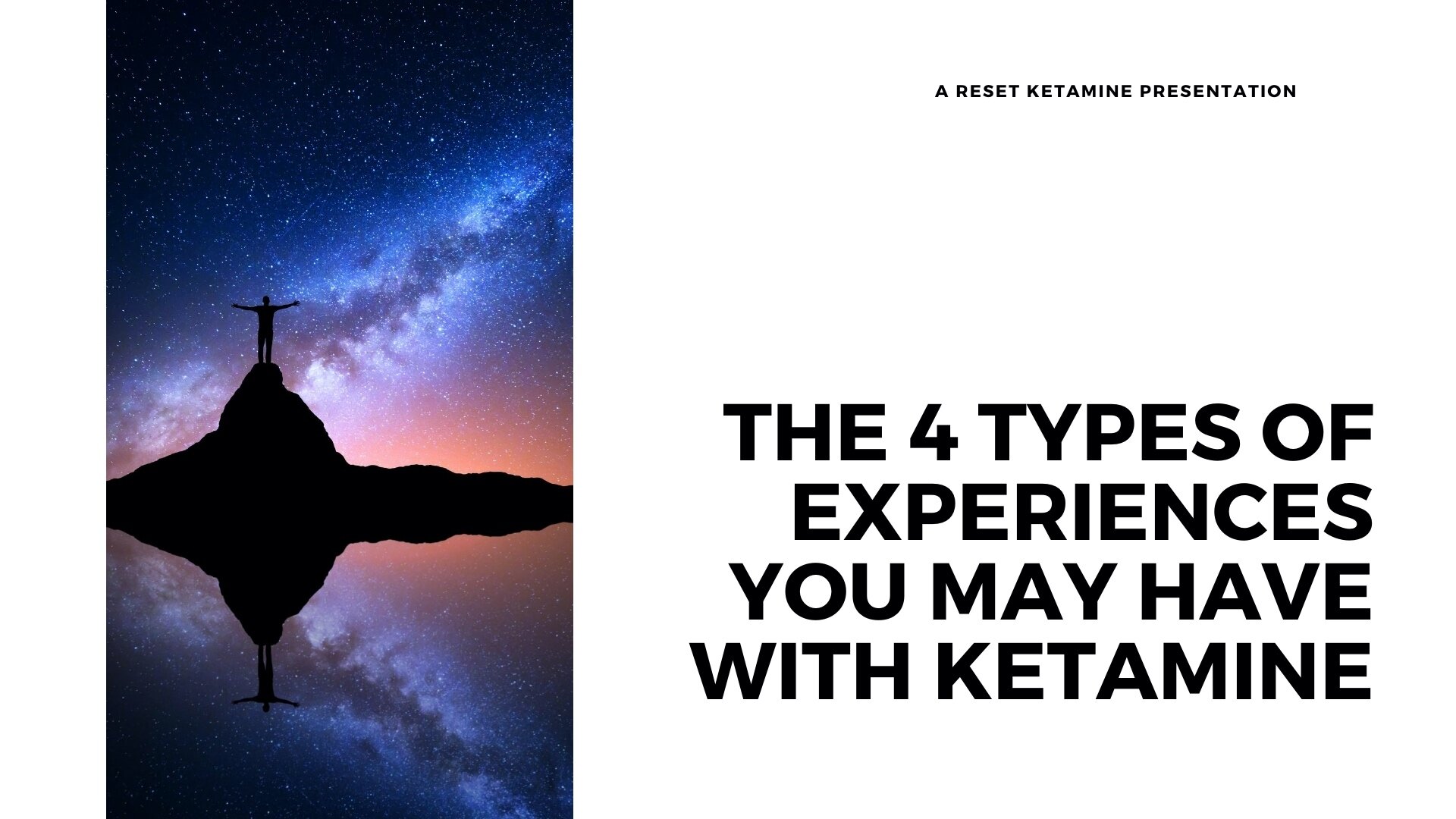
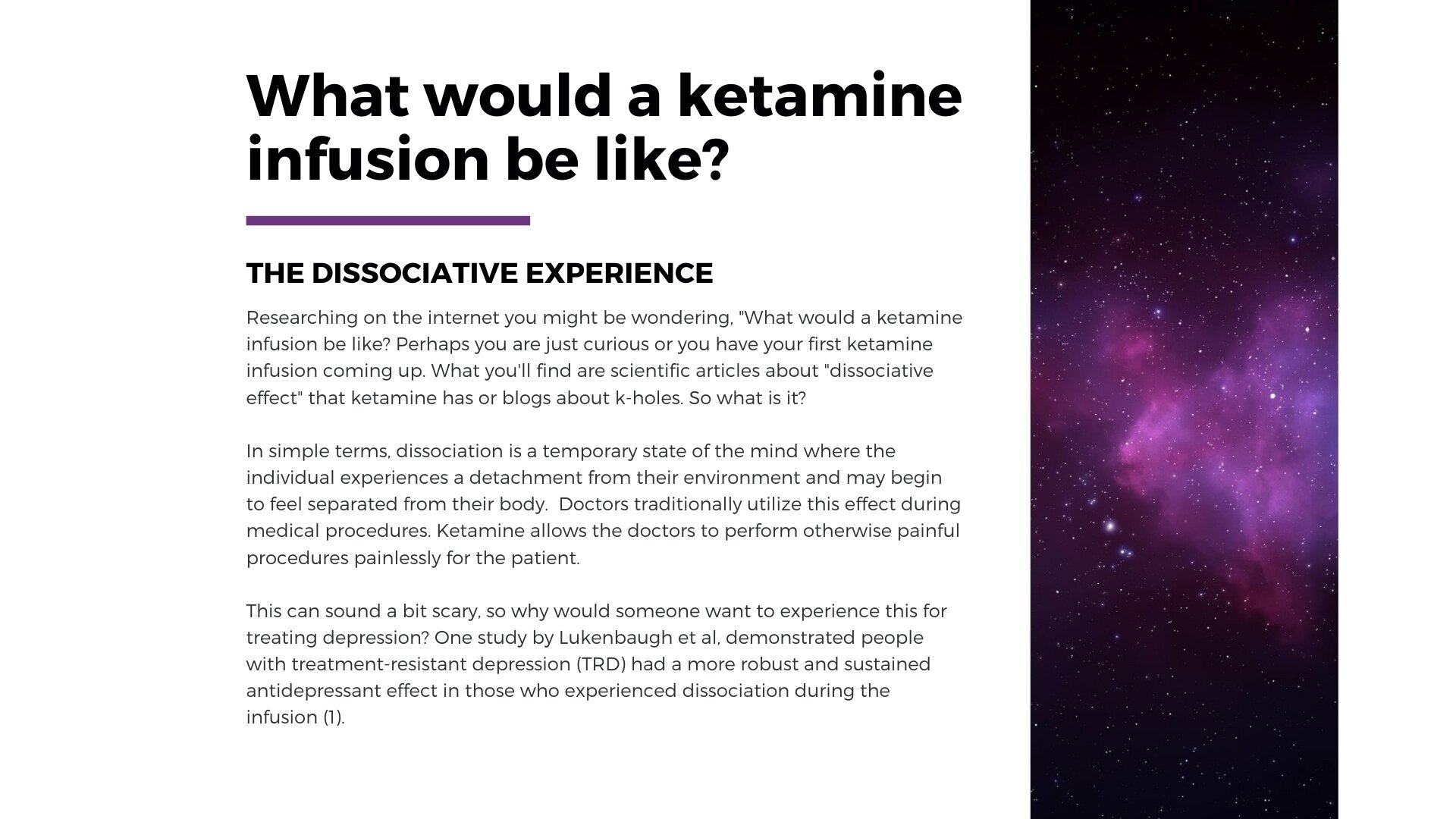
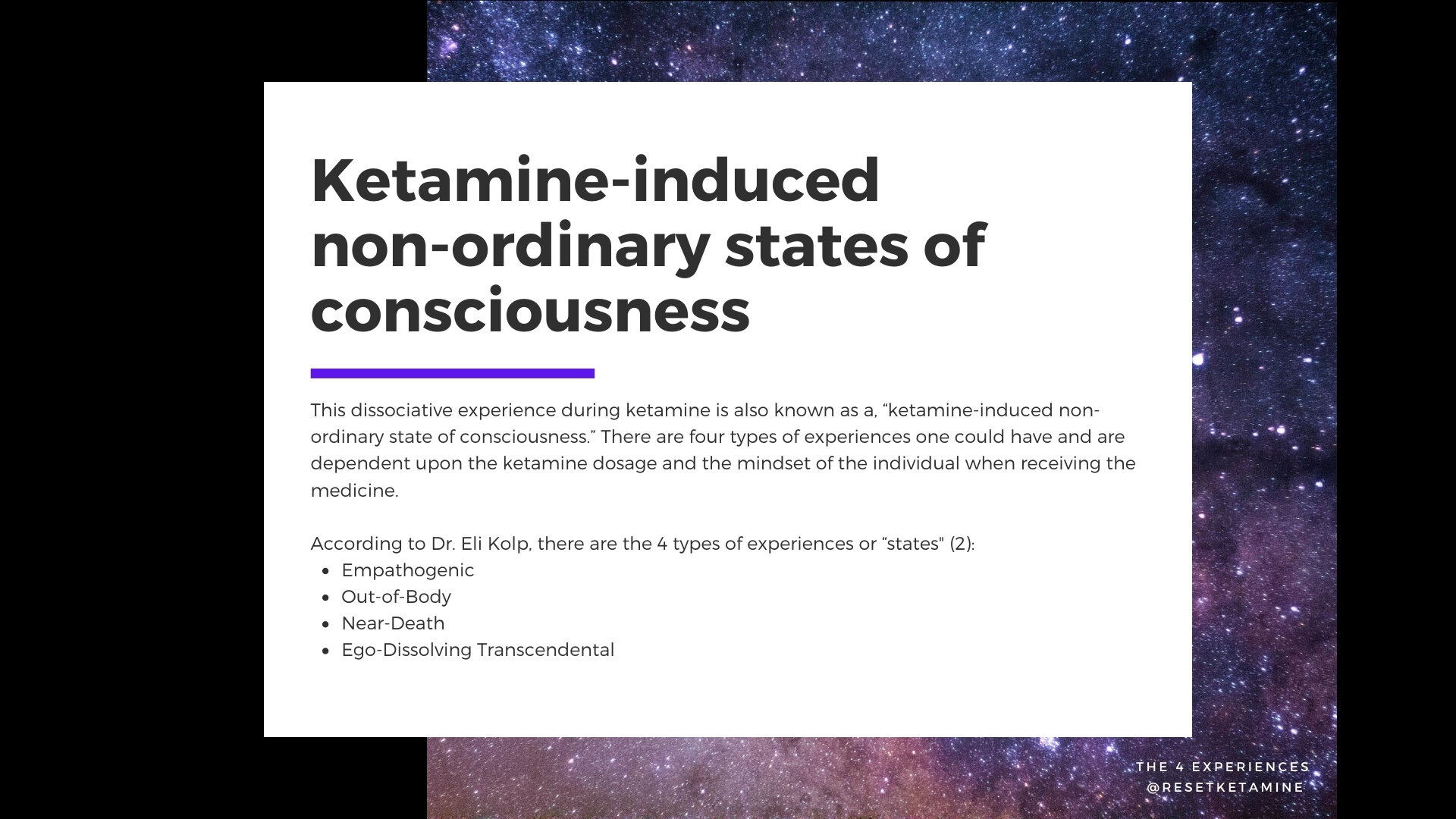
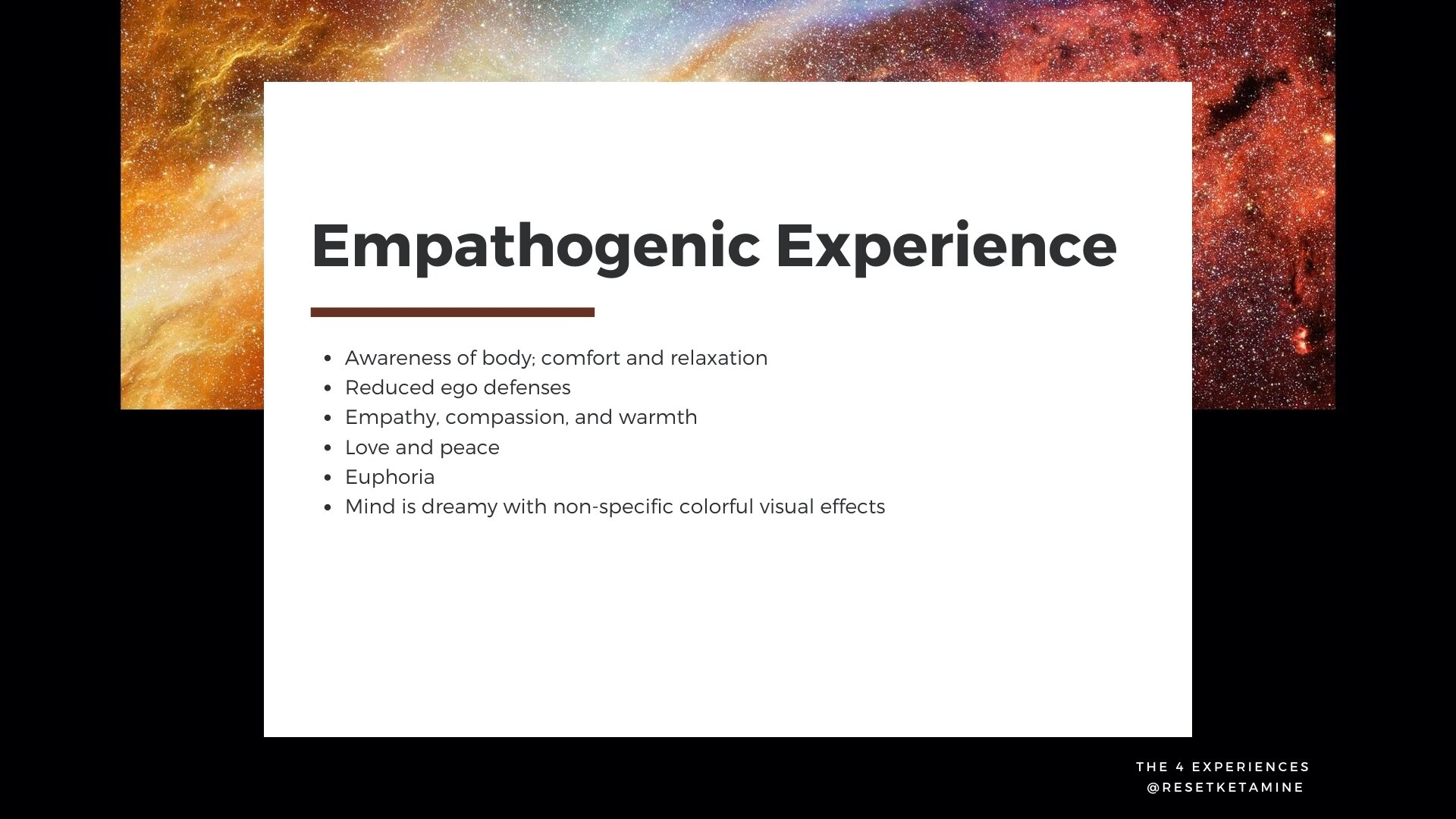
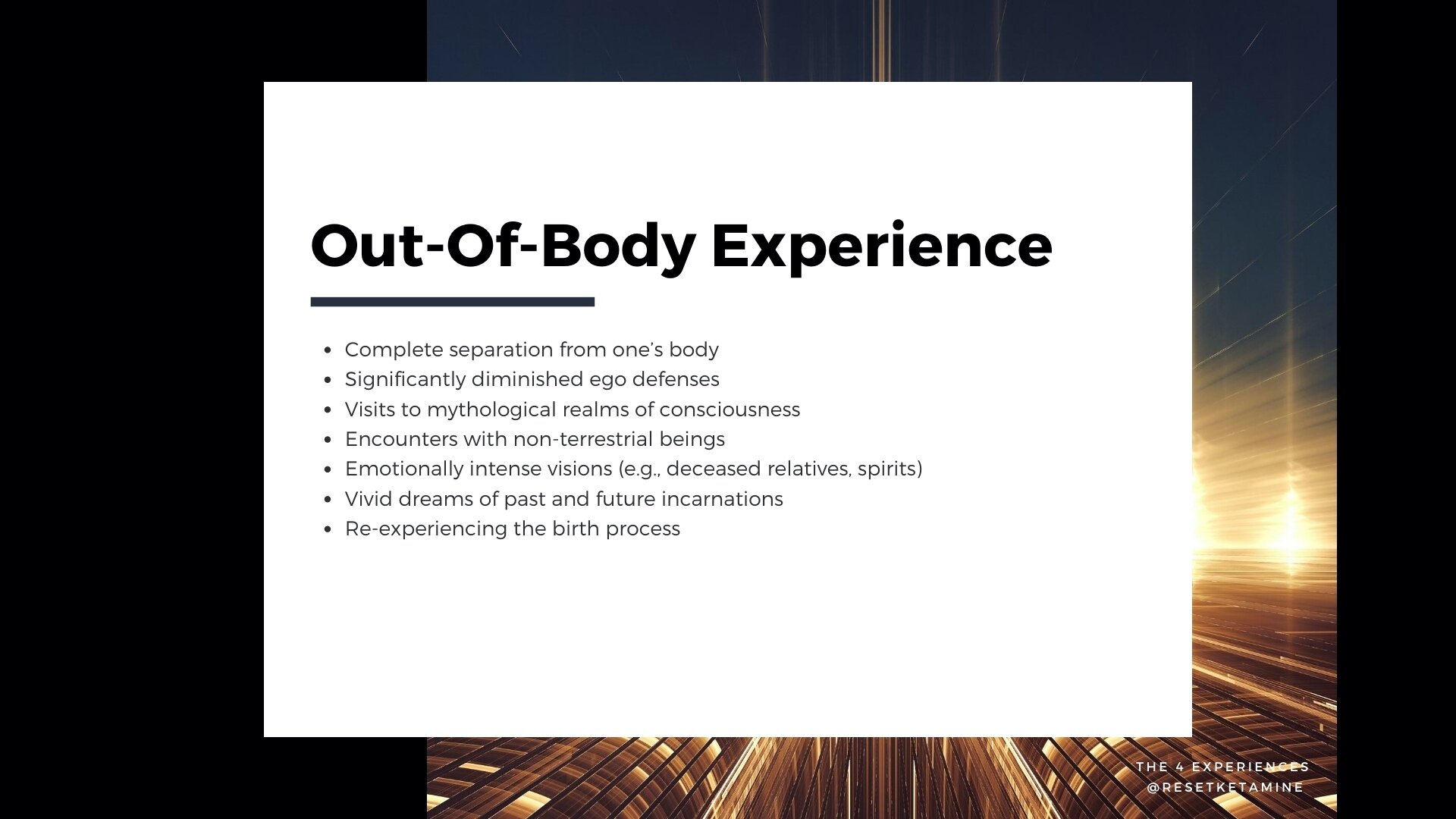
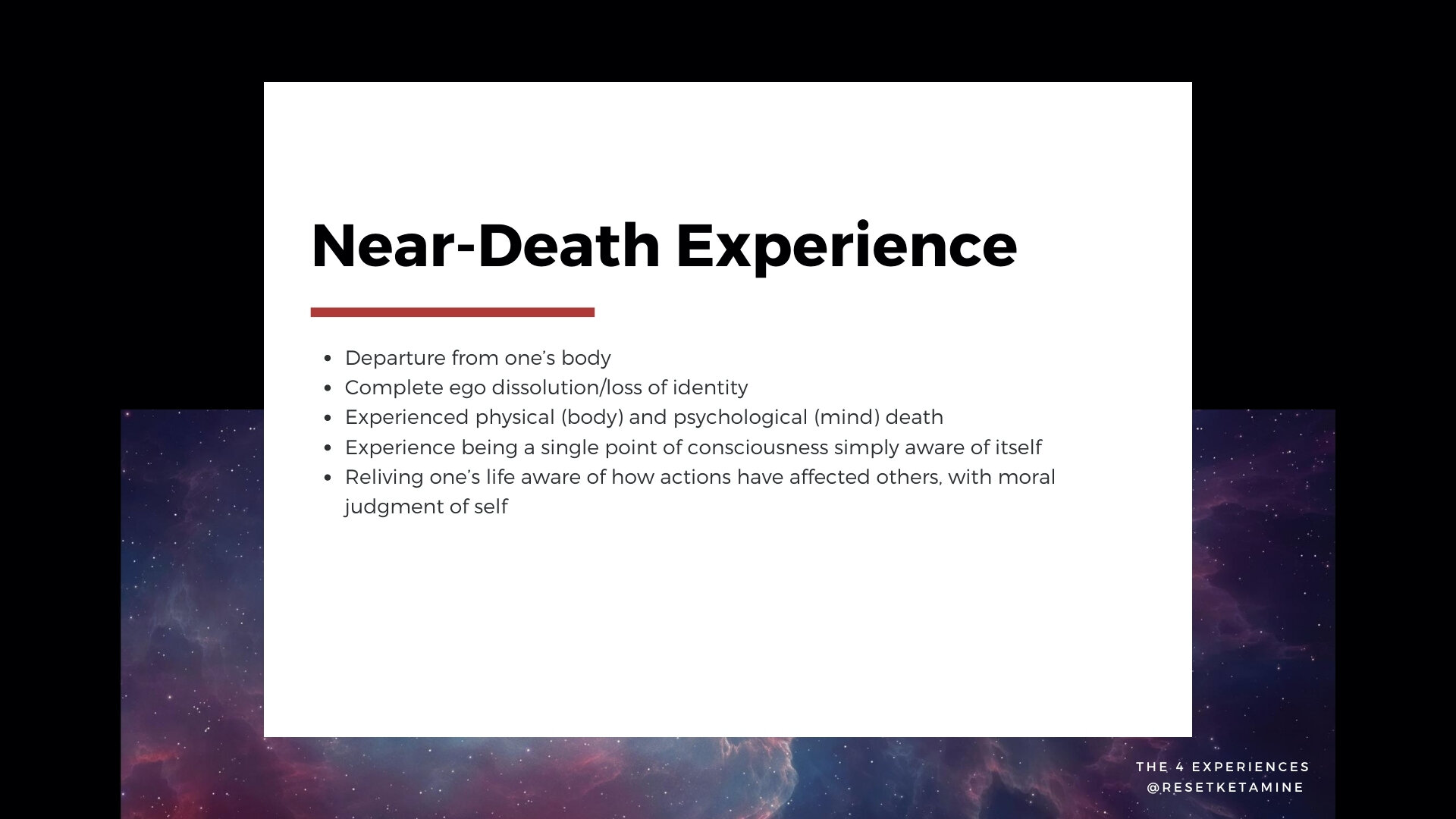


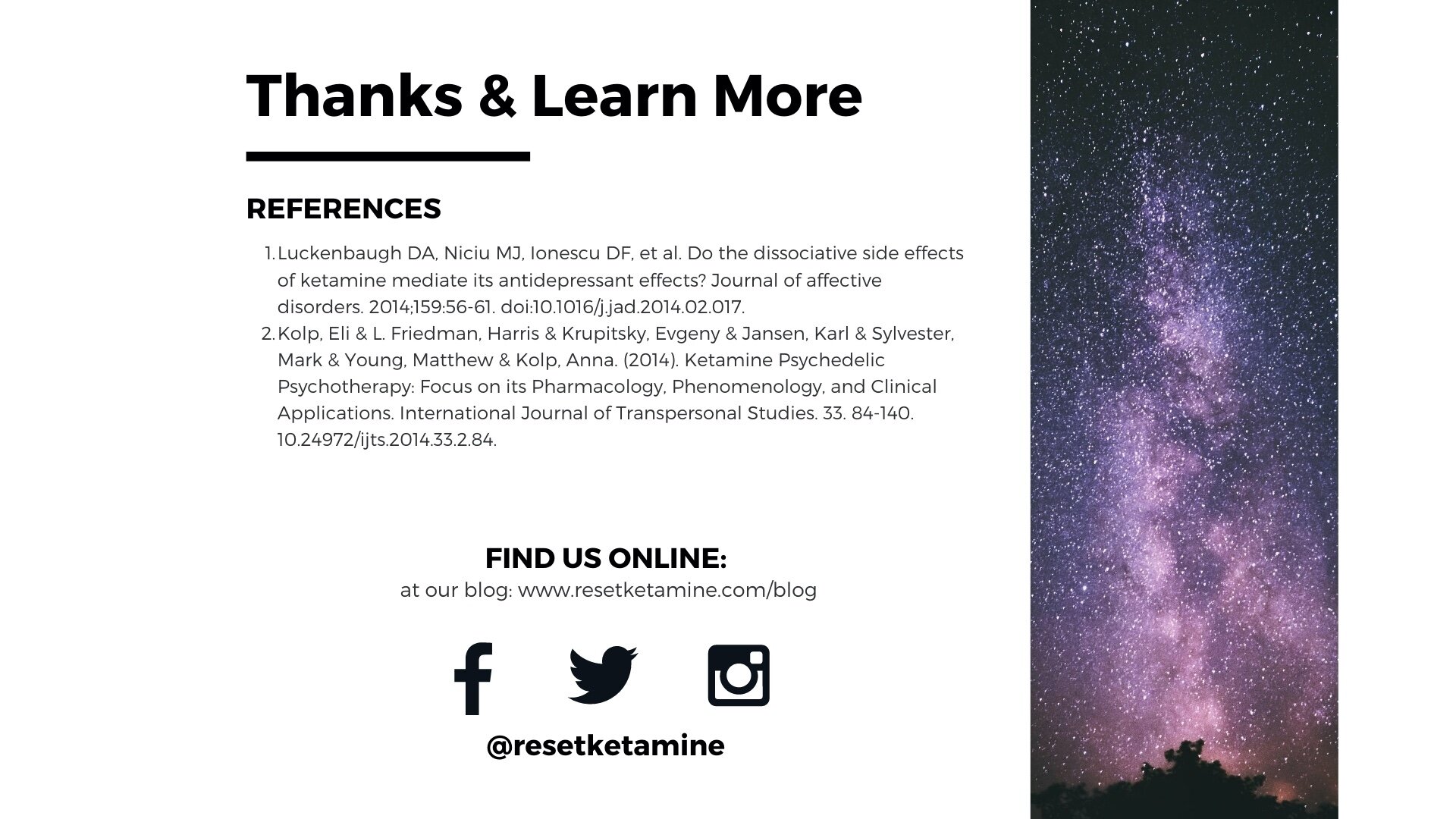
References:

![The Four Types of Experiences You May Have With Ketamine [2020 Update]](https://images.squarespace-cdn.com/content/v1/5a8dfbc1cf81e0fb77ead442/1519853468092-YIIPMI8VWKZMGFE35QGV/pexels-photo-357891.jpeg)



After their treatment, many ketamine patients leave feeling more at peace and more determined to make positive changes in their lives. Why is this? In this blog, we talk about a ketamine article that measures exactly how ketamine affects your brain wave physiology.